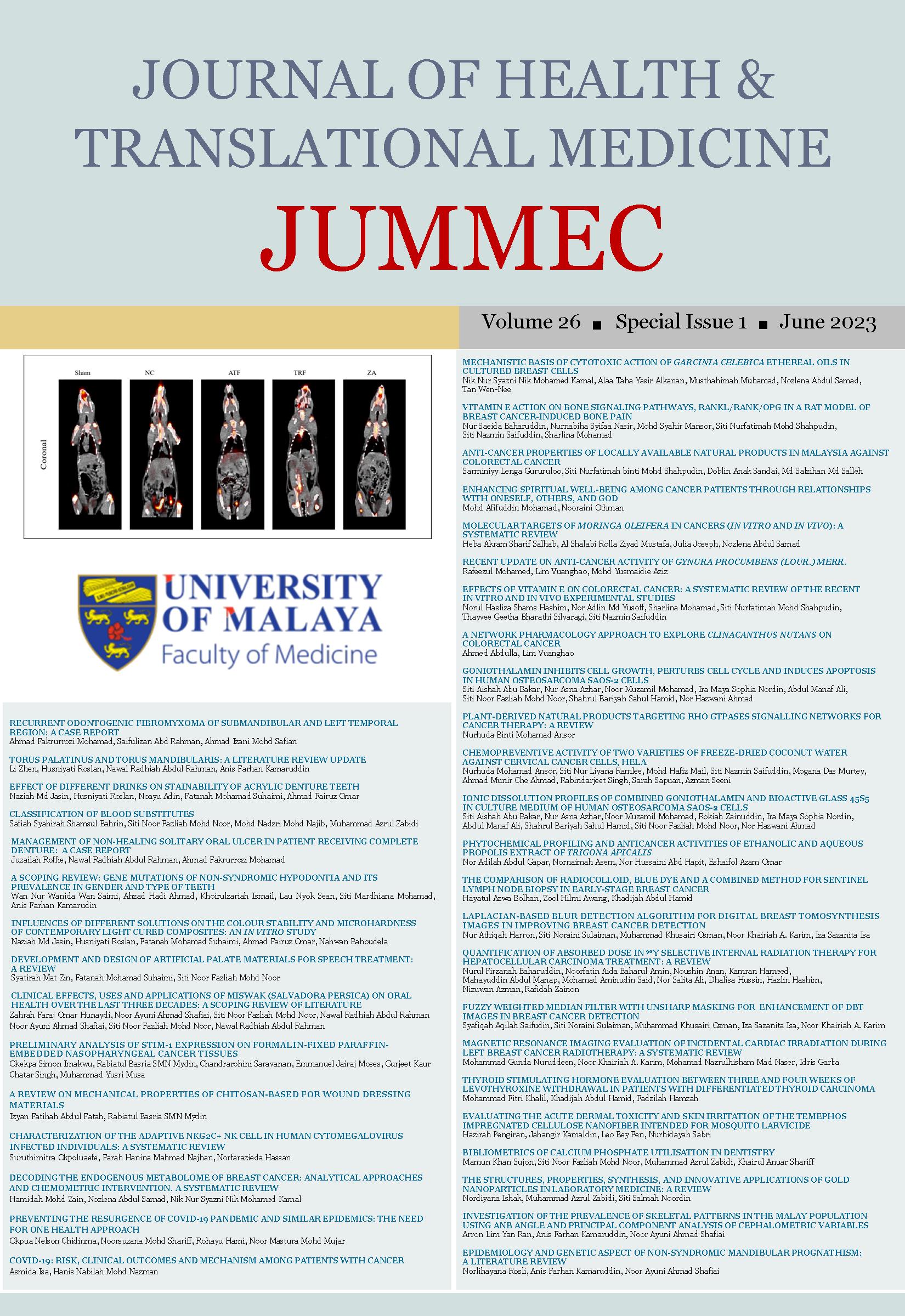EVALUATING THE ACUTE DERMAL TOXICITY AND SKIN IRRITATION OF THE TEMEPHOS IMPREGNATED CELLULOSE NANOFIBER INTENDED FOR MOSQUITO LARVICIDE
Received 2022-12-17; Accepted 2023-02-12; Published 2023-06-06
DOI:
https://doi.org/10.22452/jummec.sp2023no1.20Abstract
Cellulose nanofiber (CNF) derived from kenaf bast fiber has the potential to be used as a biodegradable and renewable larvicide nanocarrier due to its excellent physicochemical properties. However, acute dermal toxicity testing of CNF with high aspect ratios and fibrous morphology is limited even though its exposure to the skin is possible. Herein, this study aims to investigate the skin irritation effect and acute dermal toxicity of kenaf CNF (KCNF 2.3 % w/v) & kenaf CNF impregnated with temephos (KCNF+T 2.3 % w/v) following OECD test guideline 402. Female Sprague Dawley rats were exposed with KCNF 2.3 % w/v and KCNF+T 2.3 %w/v, respectively, at a dose level of 2000 mg (kg body weight)-1 for 24 hours followed by 14 days of observation for skin irritation effect, mortality, abnormal behaviours, and clinical signs of toxicity. Our result indicated that no skin irritation effect, treatment-related mortality, and abnormal behaviours in both exposed groups. However, KCNF+T 2.3 % w/v treated rats showed mild cholinergic signs of toxicity compared with the absence of clinical signs of toxicity in KCNF 2.3 % w/v treated rats. The KCNF 2.3 % w/v and KCNF+T 2.3 % w/v were non-skin irritants with the LD50 value > 2000 mg (kg body weight)-1 and therefore classified as non-hazardous chemicals of Category 5 according to the GHS system.
Downloads
Downloads
Published
Issue
Section
License
All authors agree that the article, if editorially accepted for publication, shall be licensed under the Creative Commons Attribution License 4.0 to allow others to freely access, copy and use research provided the author is correctly attributed, unless otherwise stated. All articles are available online without charge or other barriers to access. However, anyone wishing to reproduce large quantities of an article (250+) should inform the publisher. Any opinion expressed in the articles are those of the authors and do not reflect that of the University of Malaya, 50603 Kuala Lumpur, Malaysia.


